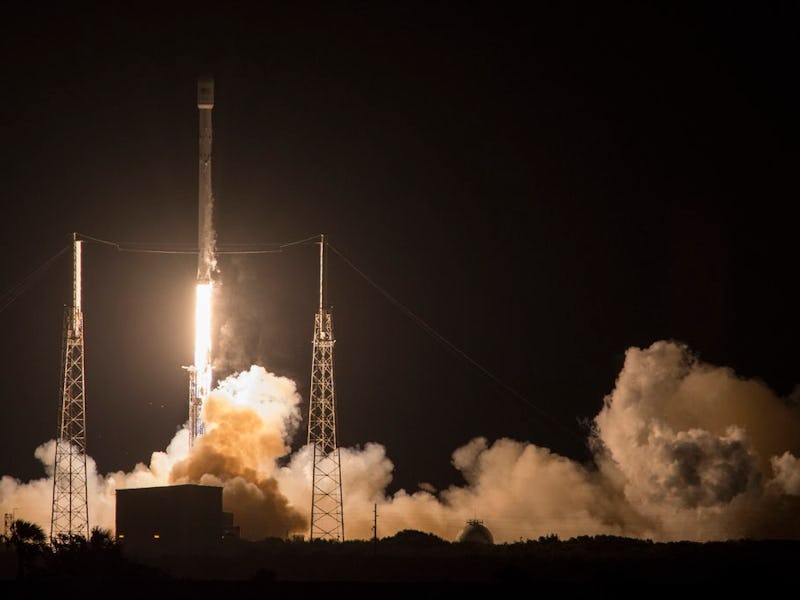SpaceX High-Velocity Landing Means Futuristic Reusable Rockets Are Officially Routine
Elon Musk: "May need to increase size of rocket storage hanger."

On Thursday night, SpaceX launched a Falcon 9 rocket that dropped a satellite off in space before returning to Earth and sticking its landing aboard a drone ship in the Atlantic Ocean. The landing represents just the second successful drone ship landing and the third overall landing of a rocket first-stage for SpaceX, with the first having set down on dry land. Nonetheless, the air of skepticism that always hovers around revolutionary projects is beginning to give way, and it’s really starting to look like SpaceX may win the second space race.
SpaceX may still lose a few rockets, especially later this year when it begins to launch the Falcon 9 Heavy, which has more than double the thrust of the current Falcon 9 rockets. But if anything testifies to SpaceX’s dominance, it’s the company’s flight manifesto for the rest of 2016. SpaceX is scheduled to launch as many as 45 additional missions this year alone.
The launch trajectory of the Falcon 9 on Thursday night is seen in this photo by Shane Brosche, shared by Elon Musk on Friday morning.
Elon Musk, CEO of SpaceX, put the most victory in clear terms in a tweet.
It’s important not to lose a complete sense of perspective. The Thursday night achievement proved that SpaceX can land rockets moving faster and burning hotter than previous attempts. This particular mission left the rocket with less fuel to burn on the descent, so the rocket had to come to a screeching halt. If SpaceX can make these kinds of risky landings routine, it may be able to get away with less fuel overall, meaning heavier payloads and less expense.
It’s hard to deny that the landing was anything but a monumental victory for SpaceX and Elon Musk, who had been playing down expectations after the first successful drone ship landing in April.
The major question will be whether SpaceX can keep these successes rolling, building confidence and economic scale to start putting some of its even more ambitious proposals into action. Besides the Falcon 9 Heavy that is slated to launch for the first time in late 2016, the company is planning to carry actual astronauts to the International Space Station in 2017 and then send its first probe to Mars in 2018.
SpaceX has not yet released video of the most recent landing, and the livestream of the Thursday launch cuts out at the crucial moment. The reaction of the crowd inside SpaceX headquarters is pretty entertaining, though. After the rocket appears standing on the screen, everyone goes nuts and even the modest broadcasters can hardly keep it together. Check it out.